The most distant object ever discovered as well as the events of National Pathology week feature in this week's show as we take on your science questions! We investigate why& socks go missing in the wash, whether light from the sun is a continuous beam and whether numerous vaccines can be given together in one dose. We also find out how higher heels make for a better runner and reveal the world's fastest camera. Plus, we find out why we get a better signal when holding an aerial and show you how to make a helicopter using card and pencils!
In this episode
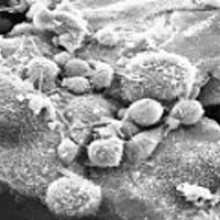
Scientists turn stem cells into germ cells
With a discovery that will help to shed light on the grey area of human reproductive biology, scientists in America have developed a technique to convert stem cells into germ cells - the precursors of sperms and eggs.
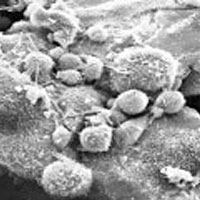 The process through which humans produce these gametes, which contain only half the amount of DNA found in a normal cell, is poorly understood and cannot be faithfully reproduced in animals, making it very difficult to study. This means that for patients suffering from infertility, research has progressed very slowly in this area.
The process through which humans produce these gametes, which contain only half the amount of DNA found in a normal cell, is poorly understood and cannot be faithfully reproduced in animals, making it very difficult to study. This means that for patients suffering from infertility, research has progressed very slowly in this area.
But now, writing in Nature, Stanford University scientist Renee Reijo Pera and her colleagues have found a way to make germ cells in the dish. The researchers began by incubating human embryonic (ES) stem cells with various growth factors known to encourage them to specialise into reproductive-type cells. They then picked out those cells - about 5% of the total - that had begun to express certain chemical markers associated with germ cells.
The team then confirmed that the resulting cells were doing something else very germ-cell-like - demethylating their DNA. This is where chemical markers called methyl groups that are added to DNA to control gene expression are stripped off to "reset" the DNA to the state seen in sperm and eggs.
Next, to find out what was controlling the process of germ cell production the team repeated the earlier steps but blocked the actions, individually and together, of three different genes called DAZ, DAZL and BOULE, which had previously been linked to the formation of germ cells. These, they found, are critical for stimulating unspecialised stem cells to turn into germ cells.
Even better, when the team used a genetic technique to boost the levels of these genes in the stem cells, they found that they could increase significantly the number of germ cells produced. And when the team examined the DNA contained within the resulting cells they found that a proportion of them contained only half the normal amount of genetic material, just as in mature sperm and eggs.
This means that this new technique can provide scientists with a powerful tool with which to study the previously inpenetrable process of human gamete formation, as well as to test the impact of factors like pollution, toxins or infections, thereby shedding light on some of the factors that underlie infertility.

Million frames a second camera
There are many processes in physics chemistry and biology which are very interesting but happen very quickly so they are hard to study. There are many forms of high speed imaging but they work by making conventional cameras faster, which normally involves expensive mechanical systems and they often have a limited light sensitivity because their exposure time is so short. So if you are not careful you have to illuminate the sample so brightly that the light levels will damage it, and they are useless if you are looking at light emitted by a process.
The Megaframe project had just built a camera capable of 1 million frames per second 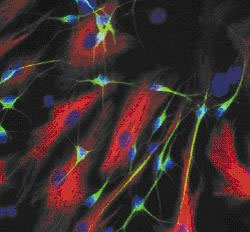 by approaching the problem from a different direction. They have taken sensors called Single Photon Avalanche Diodes, which, as the name suggests, can detect individual photons, making the camera far more sensitive than a converntional camera. These detectors are then connected to timers which can tell you when the photon arrived to within 100ps and be ready to receive another photon 32ns afterwards. They have then made arrays of these detectors up to 128 square, which is a long way from HD video, but immensely better than the alternative of using individual detectors.
by approaching the problem from a different direction. They have taken sensors called Single Photon Avalanche Diodes, which, as the name suggests, can detect individual photons, making the camera far more sensitive than a converntional camera. These detectors are then connected to timers which can tell you when the photon arrived to within 100ps and be ready to receive another photon 32ns afterwards. They have then made arrays of these detectors up to 128 square, which is a long way from HD video, but immensely better than the alternative of using individual detectors.
The precise measurement of when each photon gets to the detector makes this camera particularly means that it can be used for a variety of forms of imaging which need to know very precisely when the photons arrive at your detector.
This makes the camera useful in a variety of ways, not least, because the rate that 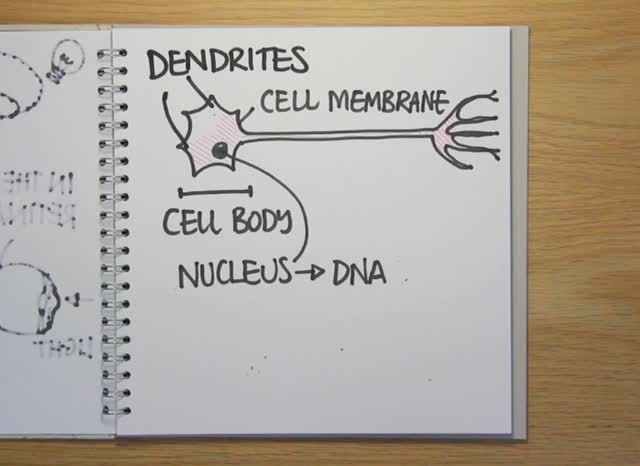 some dyes (Oregon Green Bapta-1 ) emit light after they have been given energy by a laser is dependent on the concentration of calcium around them. Calcium is used in the firing of a nerve cell so this means that they have been able to make a video of an indivdual nerve cell firing and as they get more pixels on their detectors, they should be able to video groups of cells interacting.
some dyes (Oregon Green Bapta-1 ) emit light after they have been given energy by a laser is dependent on the concentration of calcium around them. Calcium is used in the firing of a nerve cell so this means that they have been able to make a video of an indivdual nerve cell firing and as they get more pixels on their detectors, they should be able to video groups of cells interacting.

Speedy strides due to heel size
When you think about building the perfect sprinter, you might think of long legs and powerful muscles. But new research published in the Journal of Experimental Biology suggests that it's the size of an athlete's heels that might also be important in giving them the edge.
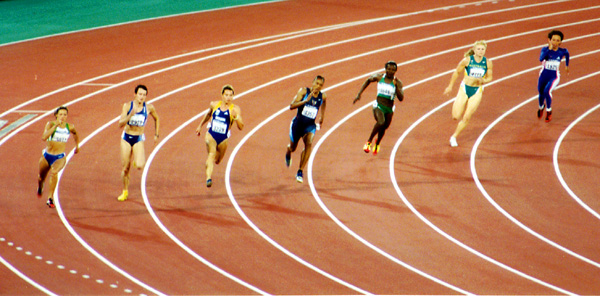 This is research by Stephen Piazza and his team in the US, who was approached by an American Football star to find out if they could help them get the edge over the competition. When a sprinter pushes off the ground, their acceleration depends on the leverage that they can generate by the calf muscles pulling on the back of the heel, pulling it up and pushing the toes down.
This is research by Stephen Piazza and his team in the US, who was approached by an American Football star to find out if they could help them get the edge over the competition. When a sprinter pushes off the ground, their acceleration depends on the leverage that they can generate by the calf muscles pulling on the back of the heel, pulling it up and pushing the toes down.
Piazza figured that the best sprinters would have a long distance between the ankle and the back of the heel - making a longer, more powerful lever and pulling the heel up a long way. But when they actually measured how far the athlete's tendon actually moved while pulling up, they got a surprising result.
The researchers discovered that this particular footballer's tendons moved a much short than average distance. So they measured the tendons of a number of elite sprinters and long jumpers, and compared them with the legs of non-sporting people. And they found that on average, the distance athlete's tendons moved with 25% less th an those of non-sporty types, suggesting they actually had a shorter "heel lever".
an those of non-sporty types, suggesting they actually had a shorter "heel lever".
When Piazza looked into this, he discovered that sprinters compensate for this by contracting their calf muscles comparatively more slowly than those of non-sprinters, generating much more force when accelerating. This is a similar design to many sprinting animals. And the scientists also found that sprinters toes were on average a centimetre longer, meaning they stay in contact with the ground longer as the sprinter pushes. So although it appears on first glance that short heels might not help you to sprint, short heels combined with long toes and powerful muscles actually help to generate more power.

Liquid identification
If you have travelled by aeroplane recently you will probably have been annoyed by the rules limiting the liquids you can take onto the plane.  The problem is that there are various liquids that can be used to make explosives or just a fire, which are hard to detect quickly and easily in the security check.
The problem is that there are various liquids that can be used to make explosives or just a fire, which are hard to detect quickly and easily in the security check.
A group for Julich in Germany think they may have a solution. They are looking at the frequencies reflected in the GHz to 10 THz region of the spectrum, which is the frequency of your mobile phone and upwards. Different liquids have different spectra so you can detect which one is in a bottle, however these frequencies are difficult to deal with and conventional spectrometers are very slow, or they only use a single frequency.
 Their solution is to use a Josephson junction, which is a small gap between two pieces of superconductor. The relationship between the voltage across the junction and the current flowing through it changes when you apply GHz and THz frequencies. So they have been able to shine a variety of different frequencies onto a suspicious liquid and the focus the reflections onto the Josephson junction and work out what frequencies were reflected.
Their solution is to use a Josephson junction, which is a small gap between two pieces of superconductor. The relationship between the voltage across the junction and the current flowing through it changes when you apply GHz and THz frequencies. So they have been able to shine a variety of different frequencies onto a suspicious liquid and the focus the reflections onto the Josephson junction and work out what frequencies were reflected.
At the moment they have only distinguished 5-6 liquids including water and a variety of alcohols, ketones and water but there is no reason it shouldn't work for more, and they can take a spectrum in a second or so which getting towards a practical speed for testing baggage.
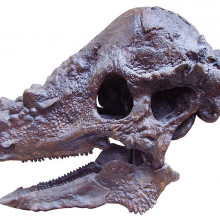
Bad news for dinosaur fans
A paper in this week's edition of PloS One is disappointing news for small boys and palaeontologists, or anyone who's a dinosaur fan. According to a study by Mark Goodwin and Jack Horner, it appears that we may have significantly over-inflated the number of different dinosaur species.
Goodwin and Horner have been looking at dome-headed dinosaurs from North America, known as pachycephalosaurs - they have heads like bowling balls. They've been collecting fossils in Hell Creek, Montana for 11 years, doing a detailed analysis of different species of dinosaur fossils, using techniques like CT scanning and analysis of bone structure.
Horner and Goodwin compared fossils of pachycephalosaurus with another domeheaded dinosaur found in Montana, and a dragon-like skull unearthed in South Dakota, named Dracorex hogwartsia - yes, after Harry Potter's school.
The scientists think that rather than being three different species, the dinosaurs are all actually from the same species, but are just at different stages of sexual maturity. They confirmed their findings by looking at another 17 dino skulls from North America.
This suggests we need to have a drastic rethink about what actually constitutes a dinosaur species. It seems that much of the confusion has crept in because juvenile dinosaurs can look quite different from grownups of the same species, due to the development of head ornaments like horns, domes and spikes. But scientists may have confused these superficial features with more important underlying similarities between fossils, missing the fact that they are actually the same species.
Horner and Goodwin reckon that up to a third of all named dinosaur species may actually never have existed, and may just be juvenile forms of another species. Other scientists have also suggested this, as a species called Torosaurus was recently dismissed as being a juvenile version of another species, while a number of duck-billed dinosaurs and the fantastically named Nanotyrannus - thought to be a mini T rex - may not be separate species.
So sadly for dino-fans, some of those wonderful names may have to be consigned to the taxonomic dustbin.
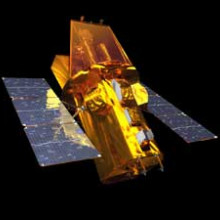
16:54 - The most distant object ever discovered
The most distant object ever discovered
with Professor Nial Tanvir, University of Leicester
Chris - Now also in the news this week, two international teams of astronomers have described what we can only describe as the most distant object ever discovered. What they've seen is the gamma ray burst of the star that died when the universe was just 640 million years old. That's less than 5% of its present age. The universe would've been only about 9% of its present size and that means the light from that star has been going across space, coming towards us for over 13 billion years. And one of the people who manage to see was Professor Nial Tanvir who's at the University of Leicester and is with us now. Hello, Nial.
Nial - Yes, good evening.
Chris - Welcome to the Naked Scientists. So, tell us first of all, how did you make this observation?
Nial - So, these gamma ray bursts are actually quite tricky to observe because their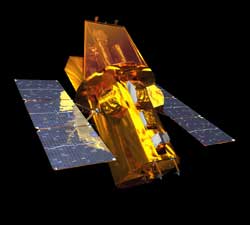 main characteristic is a short flash of gamma rays and of course, the gamma rays don't penetrate the earth's atmosphere. So, we have to observe them initially with satellites and the current sort of work-horse satellite doing this stuff is one called Swift and that's the satellite that the UK is partially - built part of the satellite so has an interest in. So, Swift finds about, on average, two gamma ray bursts every week and it reports the positions on the sky of these events down to the ground within a matter of seconds or minutes so that observers on the ground like myself can make follow up observations using a variety of different large ground-based telescopes. And it's by analyzing the information that we get from those ground-based telescopes that we ascertain things like the distance and in this case of course found that it was a record breaker.
main characteristic is a short flash of gamma rays and of course, the gamma rays don't penetrate the earth's atmosphere. So, we have to observe them initially with satellites and the current sort of work-horse satellite doing this stuff is one called Swift and that's the satellite that the UK is partially - built part of the satellite so has an interest in. So, Swift finds about, on average, two gamma ray bursts every week and it reports the positions on the sky of these events down to the ground within a matter of seconds or minutes so that observers on the ground like myself can make follow up observations using a variety of different large ground-based telescopes. And it's by analyzing the information that we get from those ground-based telescopes that we ascertain things like the distance and in this case of course found that it was a record breaker.
Chris - What actually causes the gamma ray bursts in the first place?
Nial - That's a good question. It's something that is still enshrouded in a certain amount of mystery, but we think actually, there are a number of different kinds of objects in the universe that can give rise to these sorts of flashes gamma rays. But in particular, the one that seems to be most frequently are seen are related to the collapse of a very massive star. So, we have a star that's maybe 20, 30, 40 times the mass of the sun. At the end of its life, ceases to create energy in its core and no longer supports nuclear reactions. And so, the star just collapses on the under gravity there's no pressure, radiation pressure to keep it up. Now, that's a reasonably common and fairly well understood process but it seems that in certain rate situations, instead of just producing a normal supernova which is what we would expect normally to happen, such a star can also produce an extremely energetic and highly relativistic jet of material that pierces its way after the star. And if you happen to be sort of lying and looking along the line of site, down the barrel of this jet as it were then you see this phenomenon of the gamma ray burst.
Chris - Why is it that we've not seen one that's this old before? Because presumably, the universe has had stars forming and ploughing themselves to pieces and producing gamma ray burst like these for a long time.
Nial - Yeah. The problem really boils down to just rarity. It seems that it's only very exceptional stars that explode in this way. And therefore, even in the whole universe, as I say, Swift sees a good chunk of the universe in a sense as it scan off the sky every day, and yet, it still only detects in the whole universe a couple a week. So really, it just boils down to the fact that we needed to wait a long time until we were lucky enough to spot one at this sort of distance. If we carry on observing, we may getting more sensitive satellites and scan even more of the sky then the hope is in the future that we'll find more at this sort of age.
Chris - What can you learn from the fact or what can you infer from the fact that there was a star burning 600 million years after the Big Bang when the universe was created? What's written into that gamma ray burst in terms of the signature and the chemistry that can inform you of the structure of the early universe around that time?
Nial - Right, okay. Well, I should say that in this particular instance, gamma ray burst and what - the initial flashes is very bright in the gamma rays, but then the object will then sort of track through the ground-based telescopes is a sort of fading ember. It's what we called the afterglow of the burst. And in principle, the afterglow can give you a great deal of information about the local chemistry and the conditions at the time and in the vicinity of the burst. And so, that's very important for example if we find that there is a lot or a certain amount of elements heavier than hydrogen and helium. So for instance, oxygen, carbon, iron, all the things that we're familiar with. If we find that those are present at this time, we know those could've only been cooked in the senses of stars. And so, it gives a very important clue, not just to what's happening there and then, but what must have happened at even earlier times to produce those heavier elements.
Chris - Are they there?
Nial - So that's the principle. But on the other hand, the problem is that with the GRB afterglows, they come in a sort of great range of different brightness. And really, if we're going to find that sort of information from a gamma ray burst afterglow, it needs to be a particularly bright afterglow and unfortunately, this one wasn't a particularly bright one. I mean, it was fairly bright, but it wasn't bright enough. I mean, we didn't really - at the end of the day, manage. If we had been very lucky with the kind of data that we'd got, then it's possible we would've done it. But with these things that they go from random times and so, you have to live with whatever telescopes can make the observations at that time and we've made the first observations in fact, using telescopes in Hawaii which we sort of triggered from the UK. But conditions weren't great in Hawaii that night, so you see the problem. We obtained enough data to prove that we got this record breaker, but we unfortunately didn't manage to get good enough data to sort of take it to the next step to do those sort of, you know, refined pieces of analysis.
Chris - I see. And just to finish off, Nial. Can you tell us? What does this tell us about the structure of the universe at that time, the fact that there was this big star burning at that time? How does this inform our understanding of the early universe?
Nial - Well, it tells us that there's at least one star and of course, one who seems that there were more and we hope in the future, by building up statistics of these things, we'll be able to really sort of measure the rates of star formation in the universe, even at those very early times. The other thing it does is it pinpoints the position on the sky presumably, it's galaxy that hosted this stars. So, stars forming galaxies and we'd like to know, not only about the properties of stars at this time, but also the properties of galaxies. And so, the galaxy is going to be far, far fainter than the gamma ray burst because gamma ray bursts is stupendously bright and galaxies only have, you know, a few hundred million stars in them or something like that. So they're much fainter. But we can now know the position and knowing the distance, we can go away with all the other facilities that we have without disposal like the Hubble Space telescope, and look really hard for the host galaxy. And so, that's certainly something that we haven't yet achieved, but we hope to do next year is to really search very hard and see if we can find this host galaxy and therefore, for the first time, learn something about the properties of the galaxies which existed at this really early era.

Why don't protons stick to electrons?
Naked Scientist Dave Ansell got stuck into this question...
Okay, in a very simple sense, they do stick to protons as much as they can.
They're attracted to protons and so they form atoms. An atom is essentially electrons stuck to protons.
What you really are asking though is why don't they get any closer than they do?
It's all basically to do with the fact that electrons - in fact, everything - has wave properties. And the electron's wavelengths are about a similar sort of size as an atom, and that's the reason why atoms are that sort of size over the order of the wavelength in electron.
And so you can't really compress a wave any smaller than one or few wavelengths. So the electron can't get any smaller than that without actually changing its properties entirely. Which means it can't actually get any closer to the proton in the centre of the nucleus than it does. So it's stuck as close as it can.
You can cause - if at very high pressures - electrons essentially to react with protons and turn into neutrons, and this is what happens in neutron stars. A neutron actually isn't stable just lying around in the atmosphere, or in a vacuum. It decays in about 14 minutes into an electron and proton and forms into a hydrogen atom.
Why do car wheels sometimes appear to be going backwards?
Dan - I'm just wondering why car wheels sometimes appear to be going backwards when you view them under streetlights sometimes? Chris - I think I've seen it. As you're driving along, the car next to you is accelerating away and it looks like their wheels are going backwards in the streetlights, illuminating the wheels of the car. Dan - Yeah, that's right. Chris - Yeah. It's actually a stroboscopic effect. If you've been a fan of Westerns, if you were a big John Wayne fan and you used to watch those early Westerns where the cart would pull away from the scene and the wheels would initially go forwards and then appear to start going backwards. Did you see those? Dan - Yeah. I've seen that before. Chris - Yeah. It's the same phenomenon. In the case of the cart, it's because the camera is taking X number of frames. In other words, pictures every second. In the case of the car driving down the road to where next to you, it's the streetlight flashing on and off about 120 times a second because mains electricity is 60 hertz. So the light goes on and off 60 times a second. So as a result, you're seeing 60 flashes or illuminations of the car wheel per second. Now if the car is accelerating, if you imagine the - say you drew a line on the car wheel, a chalk mark and you watched that go around, it would go around in a circle. But you only see it in the dark when it's illuminated by the street light. Now say, the street light flashes on, you see the chalk mark pointing straight upwards, the light goes off and the wheel turns around a bit, agree? Dan - Yes. Chris - Light comes back on, the chalk mark is now in the new position, agree? Dan - Okay. Chris - Now as the car wheel speeds up the distance of the chalk mark makes it around the wheel will change according to how fast the car is going, yeah? Dan - Yup. Chris - There will therefore be a speed at which the wheel will go when it doesn't look like it's moving at all because the chalk mark is starting going all the way around and finishing before the light comes back on again. Dan - Okay. Chris - Once it speeds up a bit more, the chalk mark will go right the way around and then a bit further. So it will look like that it was going faster, faster and faster. Eventually, you'll get to a speed where it's actually going right around and back on itself again. So it looks like it's actually going backwards a bit because it's doing more than one complete revolution a bit more. So it looks like it's going backwards and it's because of acceleration. Once it reaches the constant speed, that effect would stop. But it's stroboscope, that you're seeing flashes of light, illuminating the wheel and your eyes sees it, doesn't see it for a fraction of a second and then sees it in the new position. And when the speed is right, it looks like it's going backwards.
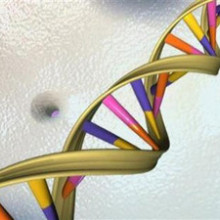
How are genes switched on and off?
Catherine - I just got a quick question for clarification really. It has been discussed on your show about genes being turned on and off through things like genetic engineering and I've got a picture in my mind a sort of a big double helix with old-fashioned light switches sticking out the sides of it, which I seriously doubt is correct. And I was just wondering what is actually meant by genes being turned on off.
Kat - That is a great question and actually, your mental image is a fairly good analogy for it. So, if you think about - imagine a long string of DNA.
Catherine - Yes.
Kat - Now, a bit of that will be the actual gene and genes are basically instructions that tell a cell to make a particular protein. So you have kind of the recipe bit. And then around that, you have sort of instruction bits.
So, these are regions of DNA that attract proteins that come and sit on them and tell the gene to be on or off. So these are called transcription factors and they attract the kind of molecular machinery that actually churns through the instructions and tells a cell to make a particular protein.
So, you have all these different proteins sitting on different bits of the DNA and some protein's transcription factors tell a gene to be switched off and some transcription factors tell a gene to be switched on. So really, you do have these molecular switches. You also have another aspect of that ,and Chris mentioned this a little bit earlier on the show, is that you have kind of things called epigenetic switches as well. And these are things that are over and above what's in the DNA.
You get little molecular, almost like post-it notes or tags stuck to the DNA and stuck to the proteins that are wrapped around the DNA that have more information about when a gene should be used, for example during development. You know, you should turn on this gene for a bit while you're making hands and then turn it off again or should this gene be permanently switched off or permanently switched on. So really, there's this whole array of little molecular switches that are telling the DNA to be on or off in a particular cell at a particular time.
Catherine - Very clever, isn't it?
Kat - Yes, it is.
Dave - Can't you also get bits of DNA which are folded up so the chemistry can't get at it.
Kat - Yes. So, a lot of these sort of epigenetic factors. When a cell has decided that this gene should be permanently off, that gene gets all compressed up and squished up so that the molecular machines can't actually get to it. So we know that genes that are off are really compressed and wrapped up really tightly. Whereas genes that are very actively used are much more open so all the machines can get into there and read the genes.
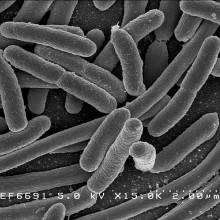
Why should we not re-freeze defrosted meat?
Well the answer is that some bacteria don't harm you only by infecting you: they can actually put things into the food that are called toxins, and the toxins are not broken down by heat.
So, bacteria multiplying in the food can lead to the accumulation of toxins in the food, which will then make you ill even though the bacteria themselves that made the toxins may have been destroyed by reheating the food.
And if you repeatedly cool and re-warm food, the food might spend enough time at a sufficient temperature to encourage the bacteria to grow and put toxins into the food whilst not themselves actually really posing much of a threat. That's one way.
Another reasons is that, if you keep on warming up and cooling down food, some bacteria will just end up flourishing and they'll go from being at very low levels in the food, where they're not growing very fast because the temperature is low, to reaching a very high population in the food that might be an infectious dose.
To catch Salmonella, for example, you actually need to eat about a million organisms, 106 particles, of Salmonella. That's an infectious dose of Salmonella. Other bacteria infect you at much lower doses. So it really depends on what the pathogen is and the mechanism through which it makes you sick.
The bottom line is, if food spends more time at higher temperatures, there's a higher chance that bacteria will grow and therefore, make you sick. So, the best advice is to either cook it and eat it, or cool it and eat it, but don't keep reheating it, because that could be bad...
Is there a limit to how hot you can make the temperature?
Temperature is basically a measure of how much energy each particle has got or each direction a particle moves in. And so, you can pretty much all the energy away from something and you can't take any more energy away, and so, there's a minimum temperature as an absolute zero. But certainly, in any normal idea of physics, anything we know, definitely there's no maximum amount of energy you can give particles. So there's no maximum temperature. You can keep on giving more and more energy and the temperature will keep on going up. There could possibly be a maximum temperature. You might find a maximum energy, you can give things due to some bizarre bit of quantum mechanics, but as far as we know, we haven't found this solid one yet.

Can vaccines be given together?
Dr Chris Smith answered this question...
Chris - The answer is both yes and no!
When you give vaccines to people, what you're aiming to do is get the immune system to respond so that it can recognise that pathogen in the future and protect you, either with antibodies or cells that kill viruses in cells.
Now, one way of vaccinating people is what's called Live Attenuated Vaccine. This is where you grow viruses in culture for many generations, and, through the effects of mutation, they lose the ability to make you ill, but they nonetheless remain infectious. So, with the MMR - Measles, Mumps and Rubella - for example, you put the virus into the person. It doesn't cause severe disease, but what it does do is to display to the immune system the entire repertoire of viral genes, viral proteins. And what that does is it makes a very broad immune response, involving making both antibodies and cells that can attack virally infected cells. That way, your body is very powerfully primed to recognise and prevent you from getting that virus in the future.
The problem is that, when you go into that state of infection, what it does is to release large amounts of a signalling hormone called interferon - Alpha interferon, in fact. And what that does is put all the cells in the body into this anti-viral state where the cells are undergoing surveillance. They increase the surface markers they display to the immune system so that they're more likely to get killed if they've got a virus in them; they degrade genetic material that they think might be viral; and they become much harder to infect for viruses.
Now, that means if you've had one virus, that's attenuated vaccine, about a week or two before, your body makes loads of this interferon. If you then come along and then try and infect yourself with another attenuated virus, for instance another vaccine, it won't work very well because it doesn't get into the cells, and the body kills it really quick before it has a chance to prime your immune system.
So, live vaccines, if you don't have them at the same time is a bad thing to do. Having them all together is fine because the immune system works by discriminating very powerfully between different epitopes that different viruses display anyway. So that's not a problem.
For the present situation we're in now though, people are asking me, "What about flu vaccines?" Because lots of people had a seasonal flu vaccine but then they're also saying, "Well now, we need to have a swine flu vaccine. Will the fact that I had the seasonal vaccine about two weeks ago make a difference for me having the swine flu vaccine now?" And the answer is not in that circumstance, no, because the flu vaccine is a killed vaccine. You're just putting in bits of dead virus - shrapnel if you like - which the immune system then learns to recognise.
This doesn't trigger the same interferon response, so it doesn't make you feel ghastly in the same way. It doesn't actually prevent you getting infected with other viruses in the same way.
Dave - Is this interferon response the reason why I still feel really quite shattered now, two weeks after I had the flu?
Chris - Yeah and the reason that flu makes you feel so rotten, despite the fact that the virus is only confined to your respiratory tract, nose and throat, and sometimes lungs if you get a very severe infection, you probably had symptoms that were nonetheless across your whole body. Muscle aches and pains, tiredness, very bad headache, temperatures, just feeling ghastly. That's because of these hormones, the interferons, that the body produces in response to the infection, which then turn all of your cells into this very antiviral prime state. So, exactly right, yeah and that's why after some vaccines that do provoke lots of interferons to be released, you have a day of feeling a bit rotten. It's not because you're infected, although you might be. It's actually the interferons - it's your body's own hormones that are making you feel like that.
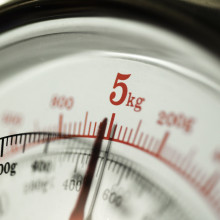
Is the Earth getting heavier due to the growth of plants?
We have actually looked at this in the past and the answer is, actually, yes the Earth is getting heavier...
Because E=mc2, Einstein's famous equation, (E) energy equals (m) mass, times (c), the speed of light squared. So, if you increase the energy in the system then the mass must also increase.
The Sun is adding energy to the Earth's system in the form of chemical energy; this arrives as light and is converted into chemical energy by photosynthesis.
Therefore, the Earth is gaining a little bit of weight in the form of the entrapment of that energy within plant chemistry.
But, compared with the 40,000 tons of dust and material that rains in on Earth from space every year, it's quite literally a drop in the ocean.
So, on the whole, the Earth is gaining a bit of weight as plants in the biosphere capture energy coming from the Sun, and the Sun warms the planet.
Will a torch shine with charged and dead batteries in it?
I think that very much depends on the chemistry of your batteries. A battery is essentially a chemical reaction which is split into two halves and the only way - and let's say you got part half A and half B, the whole lot's got to happen to be driven in any way that can happen is quite passing electron through your circuit. And eventually, the battery runs out because you run out of all the chemicals you need for the chemical reaction. Now, basically you're saying, if we apply a large voltage and carry on pushing electrons through the battery, what's going to happen? That would depend on what other the chemical reactions go on to move charge through the electrolyte in the battery. Normally, that's often quite inefficient. If you've got have something like a lead acid battery which is symmetrical, it will just start up in the wrong direction. Certainly a very simple that acid battery will - and so, it will turn into battery but pointing the wrong direction. If you have other chemistries of batteries, it could cause all sorts of havoc and it will depend on the exact chemistry. It will certainly become a very high resistance. It will work for a bit but eventually, it's going to run out of - it will either stop or it could do all sorts of strange things to your battery, it's certainly going to damage a rechargeable battery.
Does a supernova clear out a planetary system?
The answer is yes. It's the death of the star. The star's gravity is what holds things in orbit around it and if the star blows itself to pieces, then it will completely decimate the material which is in that system and that would destroy unfortunately any planets. Eventually, our sun will blow up like a red giant. The one that should go supernova, I think it's a bit too small but it will cook us but it won't blow apart. But there are stars which do blow themselves to pieces and they could take things with them.

43:25 - National Pathology Week
National Pathology Week
with Suzy Lishman, Royal College of Pathologists
Kat - Now this week, there are events running all over the country as part of National Pathology Week. This is giving people a chance to look into the work and the lives of pathologists. And on the line now, we have Suzy Lishman from the Royal College of Pathologists to tell us more about this. So hello Suzy.
Suzy - Good evening.
 Kat - Thanks for coming on the show. Now, do tell us to start with, what on earth do pathologists do? I have this vision that they're all in the lab wearing coats, cutting up dead people. What do pathologists do?
Kat - Thanks for coming on the show. Now, do tell us to start with, what on earth do pathologists do? I have this vision that they're all in the lab wearing coats, cutting up dead people. What do pathologists do?
Suzy - Well, you're quite right there. Research has shown that most people get their information about pathology from the television, watching things like CSI and Silent Witness. And I'm afraid it's just not really like that. There are over 6,000 pathologists and 20,000 scientists working in 18 different pathology specialities. And less that 1% of those people actually work in forensics, the bit you tend to see on TV. So, there's no typical day for a pathologist because they all do completely different things. For example, I'm a histopathologist, a member of the largest specialty and I study disease by examining tissue with the naked eye and under the microscope, and that might be a biopsy, a small piece of tissue that's removed during an operation, anything up to a whole organ like a breast or a kidney or a limb. So, I'm then involved in a team, deciding the best treatment to offer the patient according to what I can see when I have a look at that tissue. But then, other big specialties include haematology, the study of diseases of the blood and the bone marrow, medical microbiology, looking at the diagnosis, management and control of all sorts of infections, clinical biochemistry, the diagnosis and treatment of disease through analysis of body fluids like blood and urine.
Kat - So, you're pretty much covering the whole gamut of biology and medicine there with pathology?
Suzy - That's right. In fact, over 70% of all diagnoses in the NHS involve pathology in some way and over 700 million tests are done every year in the U.K. That's an average of over 14 for every man, woman and child in the country.
Kat - Impressive stuff. So, tell us about National Pathology Week. What sort of stuff are you focusing on this year? It's the second year, isn't it?
Suzy - Yes. Last year we just had a general year when we said, "Pathologists and scientists, get out there and promote what you're doing." We thought to give it a slightly different angle this year. We've chosen the theme of the heart and out strapline is Pathology, the heart of modern health care. So we're focusing on the diagnosis and treatment of all different types of heart disease by members of all the different pathology specialities.
Kat - So what sort of things do pathologists find out about heart disease? What sort of things would you be looking at if someone comes to you with heart problems?
Suzy - Well, pathologists are involved in even preventing heart disease developing in the first place which is a very important role so, for example, diagnosing and treating diseases like diabetes, keeping the blood sugar under control, checking people's cholesterol level to making sure that that doesn't build up because cholesterol is a risk factor for developing heart disease. And also, genetics, geneticists are also pathologists and they can look at inherited diseases and enable people to be treated for heart disease before they even know they've got it.
Kat - Fantastic stuff - so tell us about some of the heart-based events that you've got going on.
Suzy - We've got an Awareness Day at the Royal College on Monday. It's called Think Heart: Save the Baby's Life. And what we're trying to do is raise awareness of some of the heart pathology that can present in the first week of a baby's life so that parents, midwives, and GPs can be aware of what to look out for because a lot of these disorders, although very serious, can be cured if they're picked up quickly enough. There are also events around risk factors. People have the opportunity to learn about some of the risk factors for heart disease like, high cholesterol, which I've mentioned, high blood pressure, poor diet, and do some interactive events to try and find out what various factors are.
Kat - And I understand you're also having a heart - the anatomy of a heart attack. Looking at heart attacks.
Suzy - I'm particularly looking forward to this one. It's at the Royal Institution and I grew up watching their Christmas lectures so it's going to be real treat to organize an event in there. Yes, we're going to have a virtual autopsy, with a model who's going to play the body and we have a pathologist Ali Winstanley who's going to come in and talk us through on autopsy and what we would do to look - what we would look for in somebody who has died of a suspected heart attack. Ali's then going to dissect a pig's heart, for obvious reasons we can't dissect a human one, just to show a bit of the anatomy on what it is pathologists would look for at an autopsy. And then we've got illustrations of what the diseased heart would look like so you can see the damage that is done.
Kat - That sounds absolutely fascinating. How can people find out about all these events and where to go?
Suzy - We have a website
www.nationalpathologyweek.org and that has a full program. We have now over 420 events taking place around the country, in schools, hospitals, shopping centres, libraries--absolutely everywhere. So, do have a look. They're arranged by regions so there should be something near you.

Why does the sun warm us up on earth but remains cold at higher altitudes?
Chris - If you have a gas, which is, say, in an aerosol you're going to spray into your armpit, like your deodorant, there's a gas under pressure in there.
When you spray it in your armpit, it feels very, very cold. What's happened? Well the gas has expanded. Put simply, if you imagine there's some kind of piston inside the aerosol can, when the gas expanded it effectively pushed on the piston, it's done some work, let's say.
If something has does some work, it must have less energy after it's done the work than before it did the work.
Since temperature is proportional to the energy in the particles, if something's got less energy, it's therefore going to be at a lower the temperature; so the temperature must fall and that's why we think that when a gas expands, the temperature goes down.
Dave - OK. And now this is actually very related to why mountains are cold. The temperature of things on Earth is sort of in balance between the amount of heat which is arriving either from the sun or from heat moving around the world, and the amount of heat it can lose by radiating into space.
The only things which can absorb sunlight very well tend to be on the ground. The atmosphere is transparent, so the heat is going into the ground and heating it up and then that heats up the air above it.
The tops of mountains are very, very small. So, basically, what's the temperature of the atmosphere at 30,000 feet? The reason why that's very cold is because if you have pockets of air which is being warmed up on the surface of the Earth and then it lifts up by convection, it's moved upwards, the pressure drops to about half the pressure it was before, which means that gas expands. As gases expand, they get cold, so the air gets very, very cold.
So, the air around the mountain is very, very cold and also anything which is pointy like a mountain has got lots - can emit infrared light in lots more directions and the flat thing has got more surface area compared to mountain sunlight which hits it. So it cools down better during the night and emits light into the space very much better so it tends to be very cold.
Why are valleys colder than areas that are higher up?
Okay. There's a secondary effect. The world is far more complicated than you'd like to think. That tends to be because cold air falls. So, the valleys at low places on average are warmer. But if you got somewhere which is high up and the air can cool down on the tops of mountains, it's then denser around it and it falls downwards and if it's not falling very far it doesn't compress very much, doesn't get very much hotter so you get, locally very cold air is in bottoms of valleys but globally it's warmer low down and colder higher.

Why can you see the moon during the day?
Why shouldn't you be able to see the moon during the day? The moon is orbiting around the Earth. It takes the moon about 28 days to go right around the Earth and come back to where it started.
The Earth also turns, inside the orbit of the Moon. And, as we know, Earth does a complete revolution in one day, which is 24 hours. That means that the Moon is above the horizon for 12 hours and goes across the sky every day.
It might not be visible on some occasions - and this is down to how "bright" the Moon is, which is determined by how much sunlight is reflecting from it, but it is still there.
So, to see a Moon during the daytime is not so unusual!
Do magnets have healing properties?
The answer is they don't. It's basically good old-fashioned quackery as far as we know. There's this idea that if you wear copper bracelets or magnetic bracelets in some way, it can help with things like arthritis. Research has shown that this is absolute bunkem There isn't really any truth in there. There's some recent results published in October where they did a rigorously controlled trial looking at magnetic or copper bracelets compared to plastic bracelets so people didn't know what it had, and really they found that it was just a placebo effect if you tell someone they've got a magnetic bracelet they think it's doing them some good but there's actually there's no science supporting it. But it's a multimillion-pound industry so, you know, maybe worth it, if you're making them.
Does water weight less when it's boiled?
Well, Les, if your kettle is open at the top than it would have evaporated a bit of water so it may have lost weight purely through evaporation but if the kettle is a sealed unit then E=MC2 says, If you add energy to the kettle when it's hot, therefore, it should weigh slightly more than the water's hot than the water is cold.
Does light from the sun travel in a continuous beam?
You won't see the same photons of light, the individual particles of light but the properties on either side of the earth are going to be very, very similar.
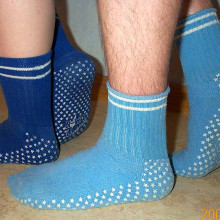
Where do lost socks go?
Kat - I think you have to give up some socks as a sacrifice to the "God of Washing". I don't know. Maybe they didn't end up as pairs in the washing machine when you put them in. Chris - I've got a theory of this actually. I think what happens is that socks, very often, glue themselves to the inside of the machine so you remove the washing but you might leave one glued to the top so it gets separated from its counterpart. You then go to the washing, hang washing up, process it, put it all back in your bedroom all ironed and stuff and now you got an oddsock. You find the other one and that gets processed separately but by then you've got this odd sock in the bedroom and you think "Oh I must have forgotten to wash this one" so I put back in the wash. Its counterpart is probably - or in the wash then the other one comes back from the wash having been found later but by then its counterpart is now in the wash and the two remain separate forever. I think that's what it is. Kat - (Laughing) Yeah that's the same circulating odd socks. Chris - Actually I just got an email from Drew Merchant and he says 'I had to take apart my wasjing machine recently and I found 3 socks stuck in the drain tube, so this is where I think they end up'.
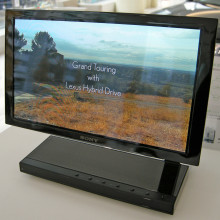
61:51 - Am I a human TV antenna?
Am I a human TV antenna?
We posed this question to Phil clark from the Particle Physics Laboratory in Edinburgh...
Phil - Essentially, when you grab the aerial, you're effectively increasing the size of the aerial by making use of your body's conducting electrolytes.
A good example of this would be, in a laboratory, if you have an oscilloscope and you look at the pick-up from the [electrical] mains frequency, you can see a 50-Hertz signal, which is the pick-up from the resonance circuits in the room. And if you hold the probe in your hand, the amplitude of the pick-up increases dramatically. [Because your body is also picking up the electrical signals from the mains, producing small currents that the oscilloscope can detect.]
The same thing happens, effectively, when you grab the TV aerial: you're improving the pick-up and it's then using you to resonate within the circuit to produce the signal in the television.
The TV has to be tuned quite closely to the right frequency, but when you touch the aerial you will improve the signal dramatically.
The other thing to bear in mind is, when you grab on to the aerial, the connectivity between your fingers and aerial; the tighter you squeeze on the aerial, or if your fingers are wet, the conductivity between you and the aerial will be improved. So [the picture improving effect] also often depends on how hard you squeeze the aerial.
Diana - And what about the difference between analog TV signals and digital?
Phil - The digital signal is a sequence of 'on' and 'off' bits that come down the aerial and effectively it will either be receiving those or it won't; you may, with the aerial, be able to increase the chances of it picking out 0's and 1's correctly, but you have to get it all right for it to work. This is also why you need quite good signal for digital antennas to work correctly.
- Previous Sprinters' Toes and Tutankhamun's Tomb
- Next Venom and Stings
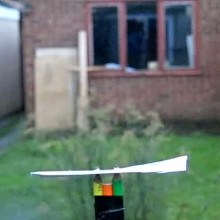









Comments
Add a comment